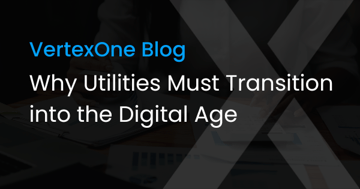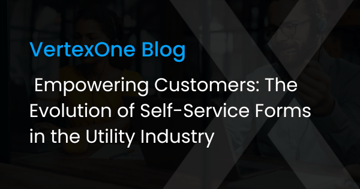Another version of this article appears in CS Week Newsline, Winter 2018 Edition.
For many of us, the fall leaves are long gone, and snow is already falling. And as the holiday season bears down on us like a gale wind, utility providers are committed to keeping the lights on, the furnaces lit, and the water flowing. As 2018 winds down, we can’t help but look forward to a new year and new challenges utilities face in serving their customers.
At Vertex, we firmly believe in helping utilities overcome one of the biggest obstacles to these challenges: an aging CIS infrastructure and the outdated, inefficient manual processes that go with it. That’s why we’ve dedicated over 20 years of utilities experience to purpose-building a CIS for utilities like yours. But we know upgrading to a new CIS can be a costly investment, and one that requires careful consideration and justification of its return on investment.
Last week, we examined several ways a new CIS can provide a positive ROI. Today we’ll explore even more ways a CIS can cost-effectively meet the needs of your utility, your staff, and your customers for years to come.
Focus your resources more on what makes your utility unique
Every utility we’ve served is unique in some way. However, over the years we’ve discovered that 70% of their actual needs and requirements for a CIS are the same. So why should you have to hire and pay someone to build you one “from scratch”?
As a CIS vendor, we believe in building and perfecting these commonalities in a core platform. That way, you don’t spend your budget reinventing the wheel, but instead focusing on the features that are truly unique to your utility. And we allow you to customize by configuring available options the way you want, rather than always requiring custom coding. That saves you money, both on the software itself and on the implementation project, while ensuring your new CIS is operating on a rock-solid, rigorously tested core.
Stay up-to-date with continuous managed upgrade (without massive projects)
Delivering a CIS on a common core platform means more than cost savings on the software. A common platform lends itself perfectly to a software-as-a-service (SaaS) model. Perhaps the best advantage of a SaaS model over a custom built-from-scratch solution is that you receive continuous improvements. With SaaS, your vendor is able to patch, update, or add new features as needed, without your having to spin up (and budget for) a whole project every time.
Unlike a built-from-scratch CIS, the SaaS model allows your CIS to keep pace with the times, without costly (and risky) upgrade projects every other year. And that means both you and your customers can enjoy the “latest and greatest” without having to pay for yet another implementation.
Enjoy the cost benefits of SaaS and the cloud—but without the downside
However, the downside about many SaaS solutions is that, if you decide to take your business elsewhere, you’re “stuck.” With most SaaS vendors, you don’t actually own licenses to the CIS software or any other applications on which it relies. If you decide to change, you’re responsible for negotiating new licenses with your new vendor, not to mention the herculean effort to extract your data from their cloud.
With careful vendor selection, it doesn’t have to be that way. For example, with a fully hosted and managed system like the VertexOne CIS, your data is always yours, as are the licenses for underlying software like SAP. You enjoy full ownership of those licenses, not to mention being able to capitalize them as assets. And that can save you big in headaches and costs if you ever choose to change to another system.
Ability to capitalize cloud-related expenses
Speaking of capitalization, this has always been one of the sticking points for adopting any SaaS or cloud-based solution over an on-premise one. For a long time, you could only capitalize software projects which included a perpetual license and could be run on on-premise hardware or third-party hardware apart from the developer. A cloud-based solution, on the other hand, was considered an operational expense—meaning utilities could not include it in their rate base.
However, the 2018 FASB proposals would expand accounting standards like ASC 350-40 and ASU 2015-05 to allow capitalized implementations for Cloud Computing Arrangements (CCA). At Vertex, we resell the SAP license as part of the implementation process, so they already conform to the existing FASB standard. But if the new FASB proposal is passed, we’ll be able to make even more enhancements to allow utilities to capitalize even more of their CCA costs.
A fully hosted and managed CIS that keeps on giving
Of course, there are plenty of other reasons a new fully hosted and fully managed CIS offers a great return on investment. For one thing, the right CIS will come with a full support staff that offers guidance far beyond initial implementation. Consider the ROI for dedicated SAP support, on-going hardware support and upgrades, third-party vendor management, and security and disaster recovery testing.
These services take the everyday technology hassle out of choosing and implementing a new CIS solution. But they also relieve you of the expense of a full staff to deal with these activities—as well as all the other costs we’ve mentioned above. With so much pointing to a positive ROI, consider making 2019 the year to upgrade to a CIS that keeps on giving—to you and your customers.





